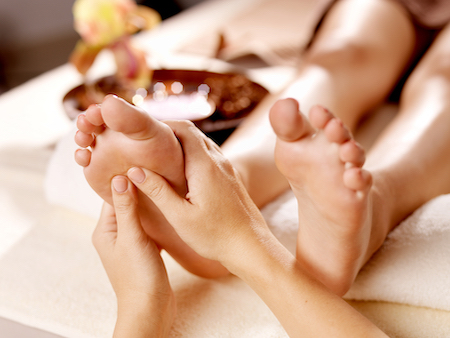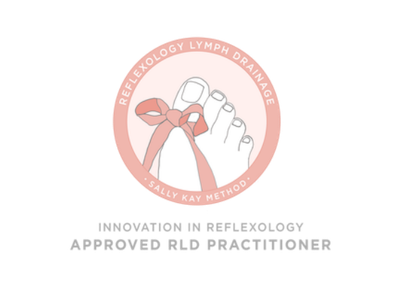Reflexology Lymph Drainage (RLD)
What is RLD?
RLD is an award winning reflexology technique which focuses on stimulating the lymphatic reflexes on the feet. The aim is to cause an effect on the lymphatic system in the body. It is a unique sequence that has been researched and developed by Sally Kay BSc(Hons), whilst working in Cancer Care. The results appear to support the theory of reflexology.
According to the Irish Cancer Society every year around 2,600 women are diagnosed with breast cancer. 1 in 10 women will get breast cancer in their lifetime. Approximately 20% of these patients develop secondary lymphoedema of the arm following treatment for breast cancer.
Lymphoedema is defined as tissue swelling due to the failure of lymph drainage. After breast cancer, a person may experience psychological or emotional difficulties due to altered body image, and a swollen limb can exacerbate this. Research suggests that survivors with lymphoedema are more likely to suffer psychological and emotional difficulties, be more disabled, and experience a poorer quality of life than survivors without the condition. Improved breast cancer survival rates suggest that approximately 2:3 women survive the disease beyond 20 years. This means that more people are living longer with this debilitating side effect for which there is currently no cure.
Physical and emotional impact
There are many adverse physical and emotional side effects of lymphoedema, not least chronic pain and discomfort, distorted limb shape and feeling of tightness, impaired function and lowered flexibility. Traditionally the condition is treated by manual lymph drainage together with/or compression garments.
Significant relief through reflexology

Through an award winning and unique sequence that has been researched and developed by Sally Kay (BSc Hons) whilst working in cancer care, this specific reflexology technique has been shown to stimulate and encourage the draining of excess lymph fluid from the system with some amazing results. The RLD technique has been developed in outpatient clinics. The award winning initial study involved women who had lived with lymphoedema for between 3 and 10 years and showed reduction in swelling of between 36 and 84%. This was after 4 reflexology treatments at weekly intervals and further experience indicates that improvement may stabilise and even improve with follow up treatments.
What’s involved in the Reflexology Treatment?
Depending on the presenting lymphoedema, we will first take measurements of both the affected and non-affected limb in order to evaluate the excess fluid in the affected limb. This is followed by an approximate 40-45 mins foot reflexology treatment, focusing specifically on the lymphatic system.
This treatment is non-invasive and incredibly relaxing and involves precise, gentle massage movements on specific parts of the feet. After each reflexology session a further set of measurements are taken and from these data we are then able to calculate the fluid loss achieved. We will then discuss an on-going treatment plan that suits each individual client’s requirement aimed at delivering the best possible outcome.
Benefits for other related conditions
Although the research to date and referred to above is specific to secondary lymphoedema in patients affected by treatment for breast cancer, this specific reflexology technique can also be used to help with other conditions affected by the lymphatic system such as:
